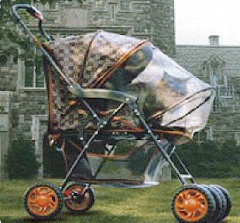Wednesday, December 2, 2009
How To Handle Aggression In Dogs
What causes aggression and how should an owner handle it in dogs?
Aggression in dogs is defined as a threatening or harmful behavior directed toward another living creature. This includes snarling, growling, snapping, nipping, biting and lunging. Dogs that show such behavior are not abnormal; they are merely exhibiting normal species-typical behavior that is incompatible with human lifestyle (and safety). There are many reasons why a dog will act aggressively toward strangers or even his owner.
The first step, when attempting to find out why your dog is being aggressive, is to take him to your veterinarian.
Aggression is influenced by several factors, including:
# Genetic predisposition, early experience, maturation, sex, age, size, hormonal status, physiological state and external stimuli. Behaviorists use a classification system based on patterns of behavior and the circumstances in which they occur. This is done to determine the dog's motivation and the cause of the behavior. The classification is as follows:
# Dominance-related aggression is one of the most common types of canine aggression that behaviorists treat. The aggressive acts are directed toward one or several family members or other household pets. Dogs are pack animals, and they relate to humans as members of their own species and pack members.
# Territorial aggression is directed toward approaching animals or people outside of the pack in defense of a dog's area (home, room or yard), owner or fellow pack member.
# Inter-male aggression between adult males usually involves territorial or dominance disputes. Inter-female aggression occurs most frequently between adult females living in the same household.
# Predatory aggression is directed toward anything that the dog considers prey, usually other species, but sometimes any quick-moving stimulus, like a car or bike.
# Pain-induced aggression is caused by a person or animal that causes pain. It often occurs when a person attempts to touch a painful area or when injections are given.
# Fear-induced aggression occurs when people or animals approach a fearful dog. This is common when the dog cannot escape, and is sometimes seen when an owner uses severe punishment. Active, unpredictable children may also stimulate this type of aggression.
# Maternal aggression is directed toward anyone that approaches a bitch with puppies or in false pregnancy.
# Redirected aggression occurs when a dog that is aggressively motivated redirects the aggression from the source to another. For example, a dog that is barking at the door may redirect his aggression onto an owner that is pulling him back. Dominant dogs often redirect onto subordinates.
Treating aggressive behavior may involve a combination of behavior modification techniques (habituation, counterconditioning and desensitization), drug therapy, surgery (such as neutering/spaying), avoidance and management (such as leash or head halter). Each case is unique, and the success of treatment varies depending on the diagnosis and in accord with your capability, motivation and schedule.
Even with successful treatment, however, there is no guarantee that the aggressive behavior won't return. In most cases, the frequency and severity of aggressive behavior can be reduced but the aggressive behavior cannot be eliminated completely.
The best that may be hoped for is to reduce the probability of aggression. You must weigh the risks of keeping an aggressive dog against the benefits.
For more important information concerning aggression please visit:
www.petplace.com/dogs/aggression-in-dogs/page1.aspx
.
Subscribe to:
Post Comments (Atom)











.jpg)




















No comments:
Post a Comment